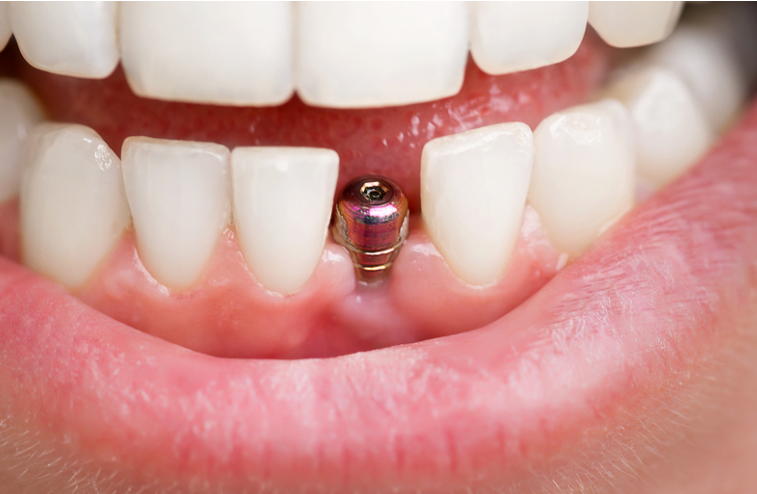Understanding Local and General Anesthesia in Dental Care
Modern dentistry has transformed the patient experience through advanced pain management techniques. What once meant enduring significant discomfort now allows patients to receive comprehensive oral care with minimal to no pain. Two primary anesthesia methods—local and general—form the foundation of comfortable dental treatment.
Local Anesthesia: Targeted Pain Relief
Local anesthesia blocks nerve signals in specific areas of the mouth, preventing pain sensations while allowing patients to remain fully conscious and alert. This targeted approach works by temporarily disrupting sodium channels in nerve fibers, preventing pain signals from reaching the brain.
How Local Anesthesia Functions
The anesthetic agent, typically lidocaine or articaine, is injected directly into the tissue surrounding the treatment area. Within minutes, the targeted region becomes numb while leaving surrounding areas unaffected. This precision allows dentists to work on specific teeth or sections of the mouth without impacting the patient’s overall awareness or cognitive function.
The numbness typically develops gradually, starting as a tingling sensation before progressing to complete numbness. Most local anesthetics contain epinephrine, which constricts blood vessels and extends the anesthetic’s duration while reducing bleeding during procedures.
Common Applications
Local anesthesia serves as the standard approach for numerous dental procedures:
Restorative treatments including cavity fillings, crown preparations, and inlay placements rely on local anesthesia to ensure patient comfort during drilling and tooth preparation.
Periodontal procedures such as deep cleanings, scaling, and root planing benefit from localized numbness, particularly when treating sensitive areas below the gum line.
Minor oral surgery including simple tooth extractions and biopsy procedures typically require only local anesthesia for effective pain control.
Endodontic treatments like root canals depend on thorough local anesthesia to manage pain during pulp removal and canal cleaning.
Benefits and Considerations
Local anesthesia offers several advantages that make it the preferred choice for most dental procedures. Patients can drive themselves to and from appointments since cognitive function remains unimpaired. The recovery process is straightforward, with normal sensation returning within 2-6 hours post-treatment.
However, some patients may experience temporary side effects. Numbness extending beyond the treatment area can affect speech and eating temporarily. In rare cases, patients may have allergic reactions to the anesthetic agents, though this occurs in less than 1% of administrations.
The injection site may feel tender for a day or two following treatment, and some patients experience a metallic taste immediately after injection due to the epinephrine component.
See also: Gentle Guidance Through Life’s Health Changes
General Anesthesia: Complete Sedation
General anesthesia induces a controlled state of unconsciousness, eliminating both pain sensation and awareness during dental procedures. This comprehensive approach affects the entire central nervous system, requiring careful monitoring and specialized training for safe administration.
The Mechanism of General Anesthesia
Unlike local anesthesia’s targeted approach, general anesthesia works systemically through intravenous medications or inhaled gases. These agents suppress brain activity in regions controlling consciousness, memory formation, and pain perception. Patients enter a sleep-like state where they cannot be awakened by external stimuli and have no memory of the procedure.
An anesthesiologist or certified nurse anesthetist monitors vital signs continuously, managing breathing, heart rate, and blood pressure throughout the procedure. Advanced monitoring equipment tracks oxygen levels, carbon dioxide output, and brain activity to ensure patient safety.
When General Anesthesia Becomes Necessary
Complex oral surgeries often require general anesthesia due to their invasive nature and extended duration. Wisdom teeth surgery in Ogden and similar procedures involving multiple extractions benefit from complete sedation, especially when impacted teeth require bone removal.
Extensive reconstructive procedures involving significant tissue manipulation or bone grafting typically necessitate general anesthesia for both patient comfort and surgical precision.
Pediatric dentistry frequently employs general anesthesia for young children who cannot cooperate during necessary treatments, ensuring their safety while allowing comprehensive care.
Patients with severe dental anxiety or special needs may require general anesthesia even for routine procedures when other sedation methods prove insufficient.
Multiple procedures performed simultaneously often warrant general anesthesia to maximize efficiency while minimizing patient stress from prolonged treatment sessions.
Administration Process and Monitoring
General anesthesia administration begins with a thorough pre-operative evaluation, including medical history review and current medication assessment. Patients receive detailed pre-operative instructions, typically including fasting requirements to prevent aspiration complications.
During the procedure, continuous monitoring includes electrocardiogram readings, blood pressure measurements, pulse oximetry for oxygen saturation, and capnography to track carbon dioxide levels. Temperature monitoring prevents hypothermia, while specialized equipment ensures proper ventilation throughout the surgery.
The anesthesia team adjusts medication levels based on the procedure’s requirements and patient response, maintaining the optimal depth of sedation for safety and comfort.
Comparing Local and General Anesthesia Options
The fundamental difference between these anesthesia types lies in their scope and intensity. Local anesthesia affects only specific areas while preserving consciousness, whereas general anesthesia creates systemic effects requiring complete patient monitoring.
Recovery timelines vary significantly between methods. Local anesthesia patients typically resume normal activities immediately, with numbness subsiding within hours. General anesthesia requires supervised recovery time, with patients needing several hours to regain full alertness and coordination.
Cost considerations also differ substantially. Local anesthesia involves minimal additional expense beyond the base procedure cost. General anesthesia requires specialized personnel, monitoring equipment, and extended facility time, resulting in higher overall treatment costs.
Risk profiles reflect these complexity differences. Local anesthesia carries minimal systemic risks, with complications primarily limited to temporary numbness extension or rare allergic reactions. General anesthesia, while safe when properly administered, involves respiratory and cardiovascular considerations requiring expert management.
Safety Protocols and Risk Management
Patient safety remains paramount regardless of anesthesia type. Comprehensive pre-operative evaluations identify potential complications before they occur. Medical history reviews reveal conditions that might affect anesthesia metabolism or increase complication risks.
Current medication lists help prevent dangerous drug interactions, while allergy histories guide anesthetic selection. Vital sign assessments establish baseline parameters for monitoring during and after procedures.
Emergency preparedness forms a critical safety component. Dental facilities maintain emergency medications and equipment for managing allergic reactions, cardiovascular events, or respiratory complications. Staff training ensures rapid response capabilities when urgent situations arise.
Post-operative monitoring continues safety oversight beyond the procedure’s completion. Local anesthesia patients receive instructions for managing temporary numbness and recognizing concerning symptoms. General anesthesia patients require supervised recovery with vital sign monitoring until full alertness returns.
Conclusion
Both local and general anesthesia serve essential roles in modern dentistry, each offering specific advantages for different situations. Local anesthesia provides effective pain control for routine procedures while maintaining patient autonomy and minimizing recovery requirements.






